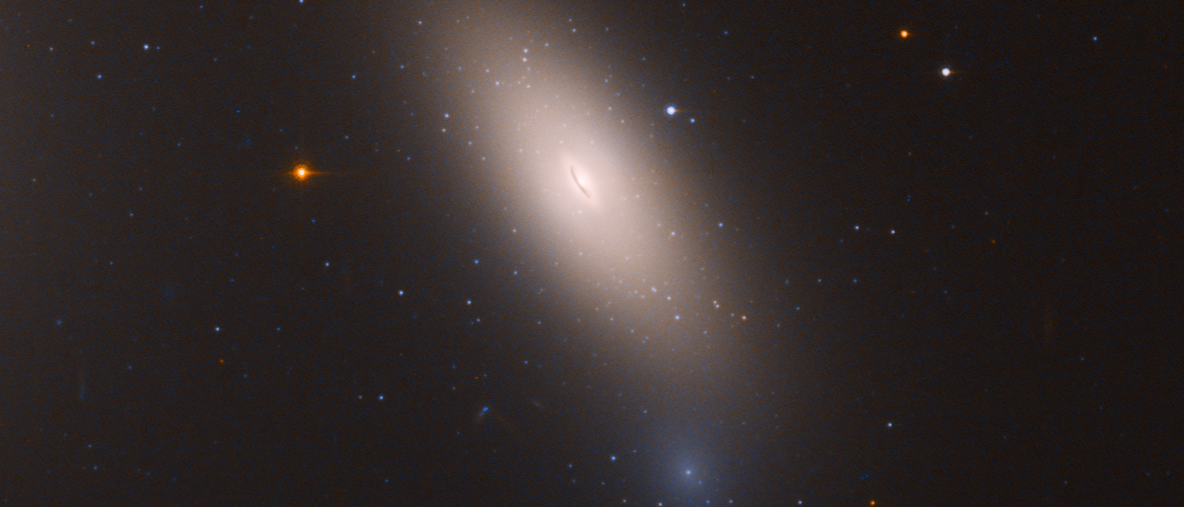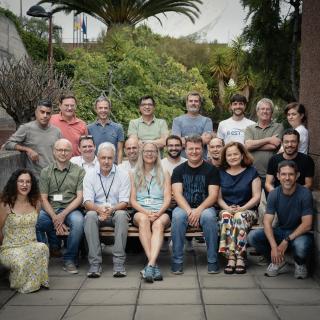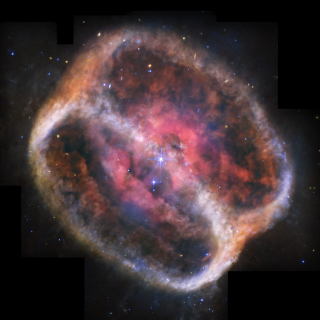The standard cosmological model states that massive galaxies contain a large fraction of dark matter. Dark matter is a transparent substance that does not interact through regular baryonic matter and is only detected through its gravitational pull over the stars and the gas.
NGC 1277 is known as the prototype of a relic galaxy, that is, a galaxy that has not accreted other galaxies since it formed. Relic galaxies are extremely rare and are the untouched remains of the giant galaxies that populated the early Universe. Since relic galaxies are very important to understand the conditions in the early stages of the Universe, we observed NGC 1277 using an integral field spectrograph. The information encoded in the spectra allowed us to build kinematic maps from which the mass distribution in the inner 6 kpc (20000 light years) of the galaxy was inferred. We discovered that the mass distribution of mass in NGC 1277 corresponds to that of stars, and we placed an upper limit of 5% to the fraction of dark matter that could exist within the probed radius. Our result is compatible with no dark matter at all in NGC 1277.
Cosmological simulations based on the standard model predict that for galaxies with the mass of NGC 1277 we should have found a dark matter mass fraction of at least 10% and perhaps of up to 70%. The lack of agreement between the observations and the expectation constitutes a mystery. We proposed two possible explanations for the fact that NGC 1277 lacks dark matter. The first one is that dark matter was stripped by interactions between NGC 1277 and the gravitational field of the cluster of galaxies to which it belongs. The second possibility is that dark matter was expelled from the galaxy when it formed through the merger of small proto-galactic bodies. None of these explanations is fully satisfactory, so the riddle of the formation of the galaxy lacking dark matter remains unsolved.



